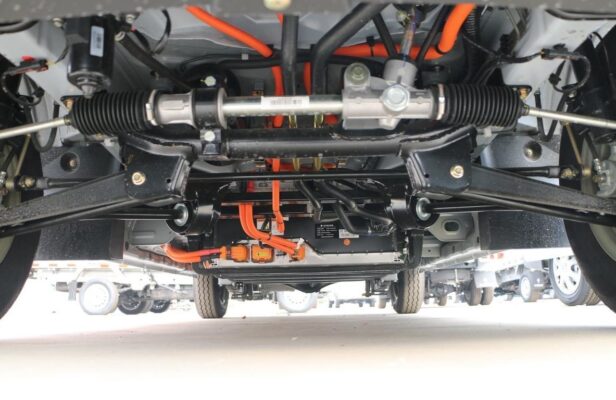Electric Truck News
What is the difference between a high-precision power analyzer and a power meter?
Posted on by Electric Trucks
In the realm of electrical measurement instruments, understanding the distinctions between a high-precision power analyzer and a power meter is crucial for accurate power assessment in various applications. At first glance, both instruments seem to serve similar purposes, but upon closer examination, significant differences emerge, particularly in their capabilities and applications.

In terms of function, most power meters are primarily designed for power measurement in sinusoidal circuits. This limitation restricts their usability in many modern electrical systems where non-sinusoidal waveforms are becoming increasingly common. Even power meters that claim to be able to measure the power of non-sinusoidal circuits often have limited capabilities. They can typically only measure the true effective values of voltage and current and the total active power. While this information is useful in some cases, it falls short when a more detailed understanding of the electrical signal is required.
In the practical application of non-sinusoidal electric power measurement, the requirements go beyond just the true effective values of voltage and current and the total active power. Engineers and technicians often need to know the fundamental effective values of voltage and current. This information is essential for understanding the basic characteristics of the electrical signal and determining its fundamental frequency components. Additionally, knowledge of the total harmonic content is crucial for assessing the quality of the power supply and identifying potential sources of interference. The amplitude of each harmonic also provides valuable insights into the specific frequencies that are contributing to the non-sinusoidal nature of the signal. Moreover, being able to measure the fundamental power and the power of each harmonic allows for a more in-depth analysis of the power distribution across different frequency components.

A high-precision power analyzer, on the other hand, is designed to meet these more complex measurement requirements. It can measure the active power of both sinusoidal and non-sinusoidal circuits with high accuracy. In addition to measuring the total active power, it can also measure the fundamental power and harmonic power of non-sinusoidal circuits. This ability to analyze the power distribution across different frequency components makes it a powerful tool for engineers and technicians working with complex electrical systems.
In other words, the main difference between a power meter and a high-precision power analyzer lies in their signal processing capabilities. The former mainly processes sinusoidal signals, while the latter can handle both sinusoidal and non-sinusoidal signals. This difference is significant because many modern electrical systems, such as those with power electronics converters, generate non-sinusoidal waveforms. A power meter may provide inaccurate or incomplete measurements in such cases, while a high-precision power analyzer can accurately analyze the power characteristics of these complex signals.

Or, to put it another way, a power meter has a relatively weak processing function for non-sinusoidal signals and can only provide a rough observation of the signal (such as the true effective value and active power). In contrast, a high-precision power analyzer can understand the detailed structure of the signal through frequency domain analysis. Frequency domain analysis is a powerful technique that allows us to break down a complex signal into its individual frequency components and analyze their amplitudes and phases. This provides a detailed understanding of the internal structure and details of the signal, but it can be somewhat abstract and not always intuitive.
For example, consider a power electronics converter that generates a non-sinusoidal output voltage. A power meter may only be able to measure the total active power and the true effective values of voltage and current. However, a high-precision power analyzer can analyze the harmonic content of the signal and determine the power contribution of each harmonic. This information is crucial for understanding the efficiency and performance of the power converter and identifying potential sources of power loss or interference.

The characteristic of frequency domain analysis is accurate but too abstract. While it allows us to accurately quantify the internal structure and details of the signal, it may not be intuitive enough for some users. In many cases, observing the real-time waveform can provide a more intuitive understanding of the signal. The real-time waveform belongs to time domain analysis, which shows the signal as it changes over time. Observing the real-time waveform can quickly and vividly understand the unknown complex signal and establish perceptual knowledge. In addition, the observed waveform can also be used for fault diagnosis or interference elimination.
For instance, if there is a sudden spike or drop in the voltage or current waveform, it may indicate a fault in the electrical system. By analyzing the waveform, technicians can identify the source of the problem and take appropriate measures to correct it. Similarly, if there is interference in the signal, the waveform may show characteristic patterns that can help identify the source of the interference and develop strategies to eliminate it.

Based on the above requirements, in addition to the measurement of voltage and current effective values and total active power that a power meter should have, a high-precision power analyzer should also have two major functions: time domain analysis and frequency domain analysis. Time domain analysis provides a visual representation of the signal as it changes over time, allowing for quick and intuitive understanding. Frequency domain analysis, on the other hand, provides a detailed breakdown of the signal into its frequency components, enabling in-depth analysis of the power distribution and harmonic content.
In conclusion, a high-precision power analyzer offers significant advantages over a traditional power meter, particularly in applications involving non-sinusoidal signals. Its ability to perform both time domain and frequency domain analysis provides a more comprehensive understanding of the electrical signal, enabling accurate power measurement and analysis in complex electrical systems. Whether for research and development, quality control, or troubleshooting, a high-precision power analyzer is a valuable tool for engineers and technicians in the field of electrical engineering.